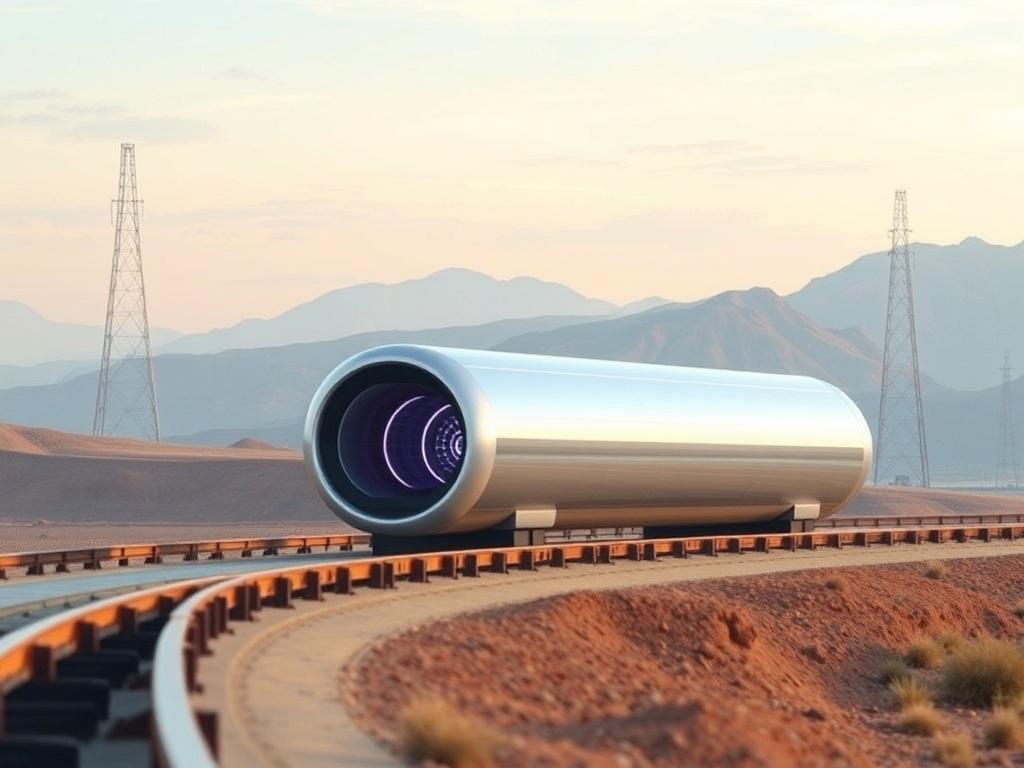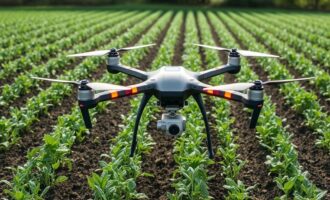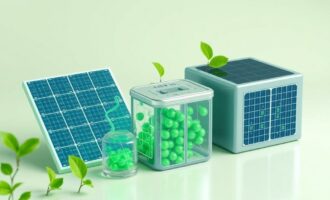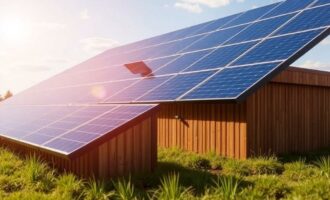- Understanding the Hyperloop Concept
- Breaking Down Hyperloop Energy Requirements
- Propulsion and Acceleration
- Aerodynamic Drag and Tube Pressure
- Levitation Systems
- Maintaining Environmental Controls
- Auxiliary Systems
- Estimating Energy Consumption: Sample Calculations
- Comparing Hyperloop Energy Efficiency with Other Transport Modes
- Challenges in Meeting Hyperloop Energy Requirements
- Innovations Driving Energy Efficiency Forward
- Case Studies and Real-World Projects
- Environmental and Economic Implications
- Summary Table: Energy vs. Other Considerations
- Looking Ahead: The Path to Energy-Efficient Hyperloop Systems
- Conclusion
The idea of the Hyperloop has captured the imagination of engineers, futurists, and the public alike. Promising ultra-fast transportation that could revolutionize how we travel, this new mode of transit offers an exciting glimpse into the future. But as thrilling as the concept sounds, the feasibility of the Hyperloop hinges largely on one critical factor: energy requirements. How much energy does a Hyperloop actually need? Is it efficient enough to be practical on a large scale? In this detailed feasibility study, we dive deeply into Hyperloop energy requirements, exploring the technical, environmental, and economic aspects that determine whether this groundbreaking transportation system can move from concept to reality.
Understanding the Hyperloop Concept
Before delving into energy specifics, it’s important to lay out the basic fundamentals of the Hyperloop. Conceptually, the Hyperloop is a high-speed transportation system designed around pods traveling through low-pressure tubes. The reduced air pressure inside the tubes minimizes aerodynamic drag, allowing these pods to reach speeds exceeding 700 miles per hour with relatively low resistance.
This system relies heavily on magnetic levitation (maglev) or air bearings for frictionless movement, along with linear motors to propel the pods forward. The promise is a swift, sustainable, and safe method of travel that could outperform traditional rail or air transport. But while the theoretical benefits are clear, the practicality depends largely on the energy it takes to get things moving and keep them moving.
Breaking Down Hyperloop Energy Requirements
Energy demands in a Hyperloop system can be split into several categories, each contributing to the total power consumption:
- Propulsion energy to accelerate and maintain pod velocity
- Energy to overcome residual aerodynamic drag inside the tube
- Levitation energy needed for maglev or air bearings
- Energy used for maintaining tube pressure and climate control
- Auxiliary energy for onboard systems and infrastructure
All these factors combine to shape the overall energy footprint of the system, which directly impacts its feasibility both from an engineering and cost perspective.
Propulsion and Acceleration
Getting a Hyperloop pod up to speed requires a significant push of energy at the start. Acceleration phases consume the most power because moving from rest to cruising speed demands work against inertia and friction. However, the design aims to reduce the drag through low-pressure tubes, cutting energy usage during the cruise phase drastically compared to traditional vehicles. Linear induction motors and advanced electric propulsion systems are at the heart of this energy usage.
Aerodynamic Drag and Tube Pressure
By creating a vacuum or near-vacuum inside the tube, the Hyperloop dramatically decreases air resistance, one of the biggest energy sinks in traditional transport. Despite this, some residual air remains, and friction from this thin air persists. Energy is continually needed to overcome this drag, a factor that increases with speed. Research shows that as tube pressure is lowered from atmospheric pressure to about 100 Pascals—a level achievable with current vacuum pump technology—the energy loss from drag reduces by over 99%.
Levitation Systems
Levitation technology, whether magnetic or air-based, also demands energy. Magnetic levitation, for example, requires electromagnetic fields to lift and stabilize the pods, although innovations in superconducting magnets are helping to reduce continuous power draw. In contrast, air bearings use compressed air to float the pod, which necessitates energy to compress and sustain airflow. Each method has its trade-offs.
Maintaining Environmental Controls
To keep the tube in the desired low-pressure state, vacuum pumps operate continuously along the route. Additionally, temperature regulation inside the pods and tubes ensures passenger comfort and equipment durability, both of which contribute to the overall energy demands. While these systems may be less energy-intensive than propulsion and levitation, they add a steady background load that can’t be ignored.
Auxiliary Systems
Finally, energy is required for control systems, lighting, safety mechanisms, communication networks, and emergency protocols. Though these consume less energy compared to main transport functions, their contribution is crucial for safe and reliable operation.
Estimating Energy Consumption: Sample Calculations

Let’s get a bit quantitative to understand what these energy requirements might look like practically. Consider a Hyperloop route of 500 kilometers with pods capable of carrying 50 passengers each.
| Energy Component | Estimated Energy Usage (kWh per trip) | Notes |
|---|---|---|
| Propulsion and Acceleration | 250 | High initial energy; regenerative braking can reduce net usage |
| Aerodynamic Drag | 50 | Small energy use due to vacuum |
| Levitation (Maglev) | 40 | Continuous energy to maintain magnetic fields |
| Vacuum Pumps & Pressure Control | 30 | Continuous operation along entire tube length |
| Climate Control and Auxiliary Systems | 20 | Includes heating, cooling, lighting, and electronics |
| Total Energy per Trip | 390 kWh |
While these numbers are estimates, they provide a useful framework for considering the overall Hyperloop energy profile. Importantly, some systems like regenerative braking—where energy from slowing down is reused—could dramatically improve efficiency.
Comparing Hyperloop Energy Efficiency with Other Transport Modes
To make sense of these figures, it helps to compare Hyperloop energy consumption against existing transportation options. The aim is to judge if the Hyperloop’s energy requirements make it a viable, sustainable alternative.
| Transport Mode | Energy Consumption (kWh/passenger/100 km) | Typical Speed (km/h) | Remarks |
|---|---|---|---|
| Hyperloop (projected) | 4–6 | 700+ | Very efficient for ultra-high speed travel |
| High-speed rail | 6–10 | 250–350 | Well-established technology; higher drag and friction |
| Commercial airliner | 15–25 | 800–900 | Energy-intensive due to atmospheric drag and weight |
| Electric car (average) | 20–25 | 100–130 | Lower speed, higher per-passenger energy on highways |
From these comparisons, you can see the Hyperloop’s design promises exceptional energy efficiency, particularly given its potential speeds. This could make it a game-changer for inter-city transportation, especially in regions where aviation dominates currently.
Challenges in Meeting Hyperloop Energy Requirements
Despite the optimistic estimates, several hurdles remain in realizing these energy efficiency goals. First, maintaining the low-pressure environment over long distances is technically challenging and energy-consuming. Continuously operating vacuum pumps and ensuring airtight tubes adds complexity and cost.
Next, levitation systems, while efficient in principle, still require further innovation to minimize energy consumption. Superconducting magnets, for instance, need cooling to near absolute zero, which itself consumes energy. Air bearings might be simpler but have their own energy demands.
Additionally, power sources pose another set of challenges. For the Hyperloop to claim sustainability, its operating energy must ideally come from renewable or low-carbon sources. Integrating solar, wind, or grid-based green energy will be vital to ensure the system’s environmental benefits.
Operational factors also contribute. Variations in passenger numbers, pod speed, stops, acceleration profiles, and emergency protocols all impact real-world energy usage. Therefore, adaptive energy management systems must be developed to optimize consumption dynamically.
Innovations Driving Energy Efficiency Forward
Several emerging technologies can help bridge the gap between theory and practical application of Hyperloop energy requirements.
- Energy Recovery Systems: Regenerative braking and energy recapture from pod deceleration can reduce net energy consumption significantly.
- Superconducting Materials: Advances in high-temperature superconductors promise to reduce the cooling energy needed for maglev systems.
- Advanced Aerodynamics: Enhanced pod shapes and surface materials can minimize residual drag, even at low tube pressures.
- Smart Power Management: AI-driven control systems can optimize propulsion, levitation, and auxiliary energy usage in real time.
- Renewable Energy Integration: Building dedicated solar arrays or wind farms alongside Hyperloop corridors to supply clean power.
These innovations collectively enhance the feasibility of the Hyperloop by bringing energy requirements within manageable, sustainable bounds.
Case Studies and Real-World Projects
Several companies and governments are actively developing prototype Hyperloop systems, providing data and experiences that inform energy feasibility considerations.
- Virgin Hyperloop: Conducted successful passenger test runs and is focusing on optimizing energy efficiency in propulsion and levitation.
- Hardt Hyperloop: A European project aiming to build vacuum tube infrastructure with minimal energy loss, emphasizing low-cost, scalable vacuum pumps.
- Elon Musk’s Hyperloop Concept: Proposed the original concept and detailed preliminary energy requirements, highlighting regenerative braking and solar powering.
These pioneers are tackling the tough engineering and economic questions around energy, proving that while challenging, the energy requirements of the Hyperloop are not insurmountable.
Environmental and Economic Implications
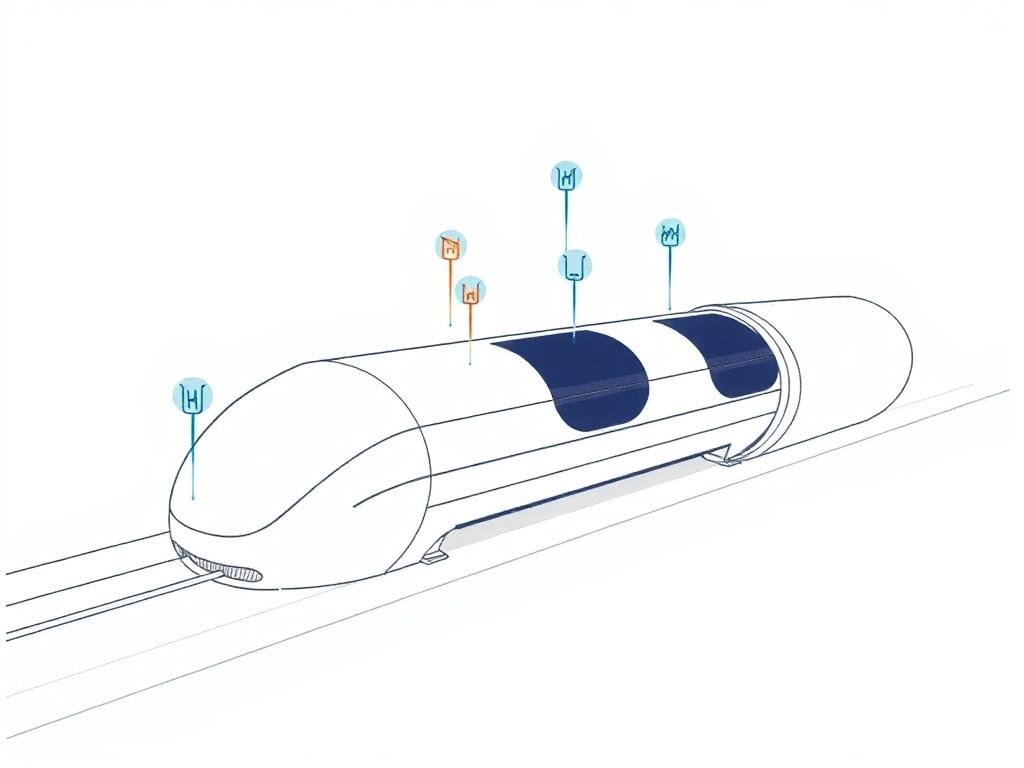
Energy consumption directly ties into the broader environmental and economic implications of the Hyperloop. Lower energy requirements mean reduced carbon emissions, assuming the energy is sourced sustainably. Compared to aviation, which is a significant contributor to global greenhouse gases, the Hyperloop offers a cleaner alternative for medium-distance travel.
Economically, efficient energy usage translates to lower operational costs and ticket prices. However, capital expenses for building vacuum tubes, propulsion infrastructure, and levitation systems are substantial. Energy efficiency helps justify these investments by improving long-term viability and return on investment.
Summary Table: Energy vs. Other Considerations
| Factor | Impact on Feasibility | Considerations |
|---|---|---|
| Energy Consumption | Crucial | Determines operating cost and sustainability |
| Infrastructure Costs | High initial investment | May be offset by energy savings and speed benefits |
| Safety & Reliability | Essential | Systems must operate continuously; energy system stability vital |
| Environmental Impact | Positive if powered sustainably | Low emissions incentivize renewable power integration |
| Scalability | Dependent on energy efficiency | Better energy profiles improve feasibility for wider rollout |
Looking Ahead: The Path to Energy-Efficient Hyperloop Systems

The energy requirements of the Hyperloop are a pivotal aspect shaping its future. Current analyses and real-world prototypes suggest that while challenges are significant, they are approachable with dedicated innovation. The synergy of vacuum technology, maglev advancements, renewable energy, and intelligent control systems will likely define the timeline and viability of Hyperloop adoption worldwide.
Public and private partnerships, policy support for infrastructure development, and continued research funding will also play critical roles. Long-distance, high-speed travel needs energy solutions that not only perform technically but fit within our broader climate and economic goals. The Hyperloop could become a shining example of how visionary transportation can align with responsible energy use.
Conclusion
In summary, the feasibility of the Hyperloop hinges in large part on its energy requirements. Careful consideration of propulsion, levitation, aerodynamic drag, and environmental controls reveals a complex but promising energy profile. Compared to traditional transport modes, the Hyperloop offers significantly improved energy efficiency at unparalleled speeds—assuming technological challenges are overcome. Advances in vacuum technology, superconducting magnets, and renewable energy integration are key to making the Hyperloop not just a feat of engineering, but a sustainable and economical transportation solution. While barriers remain, the ongoing research and prototypes suggest the goal of an energy-efficient Hyperloop is within reach, paving the way for a revolutionary shift in how we travel across cities and countries.
Как вам статья?

